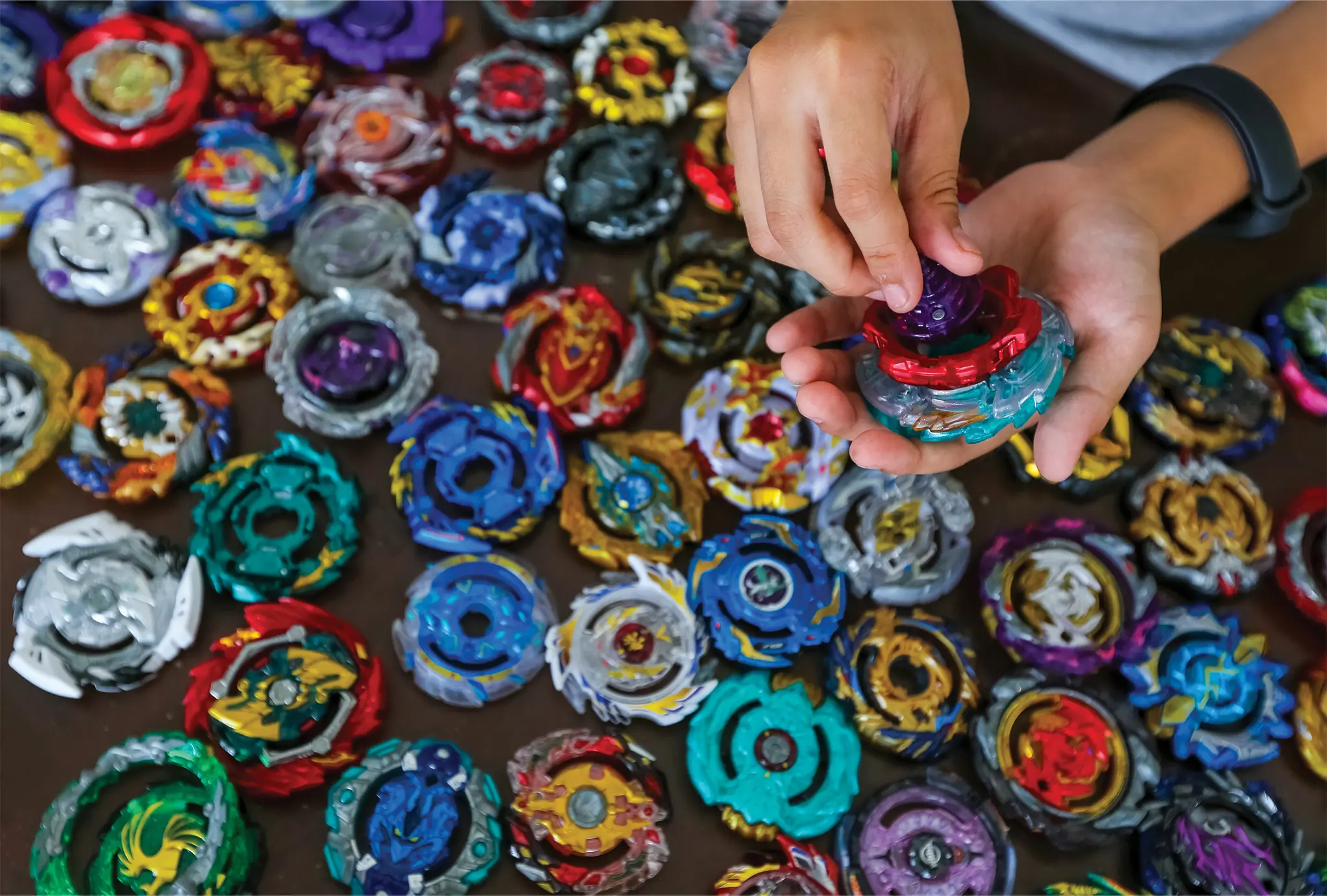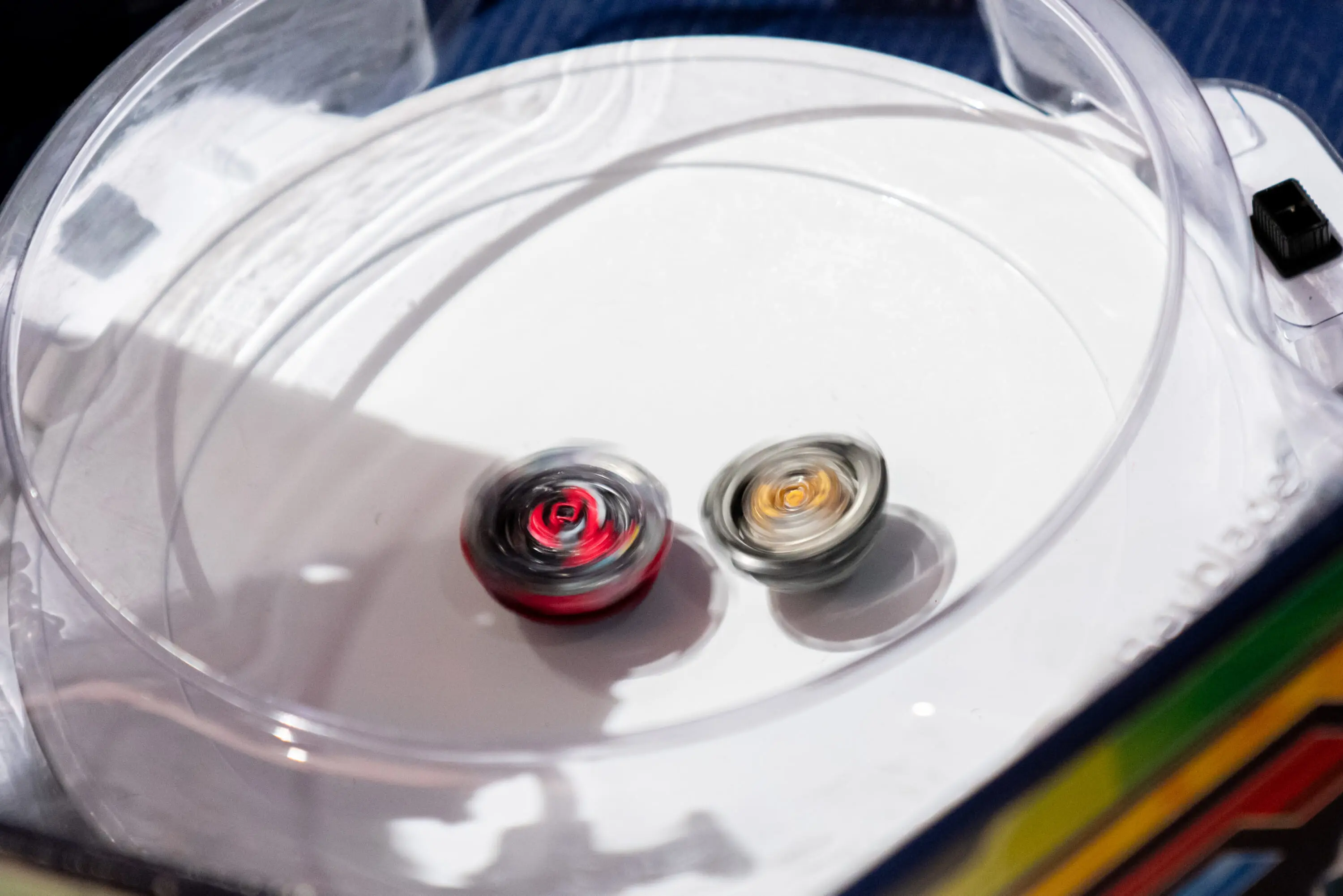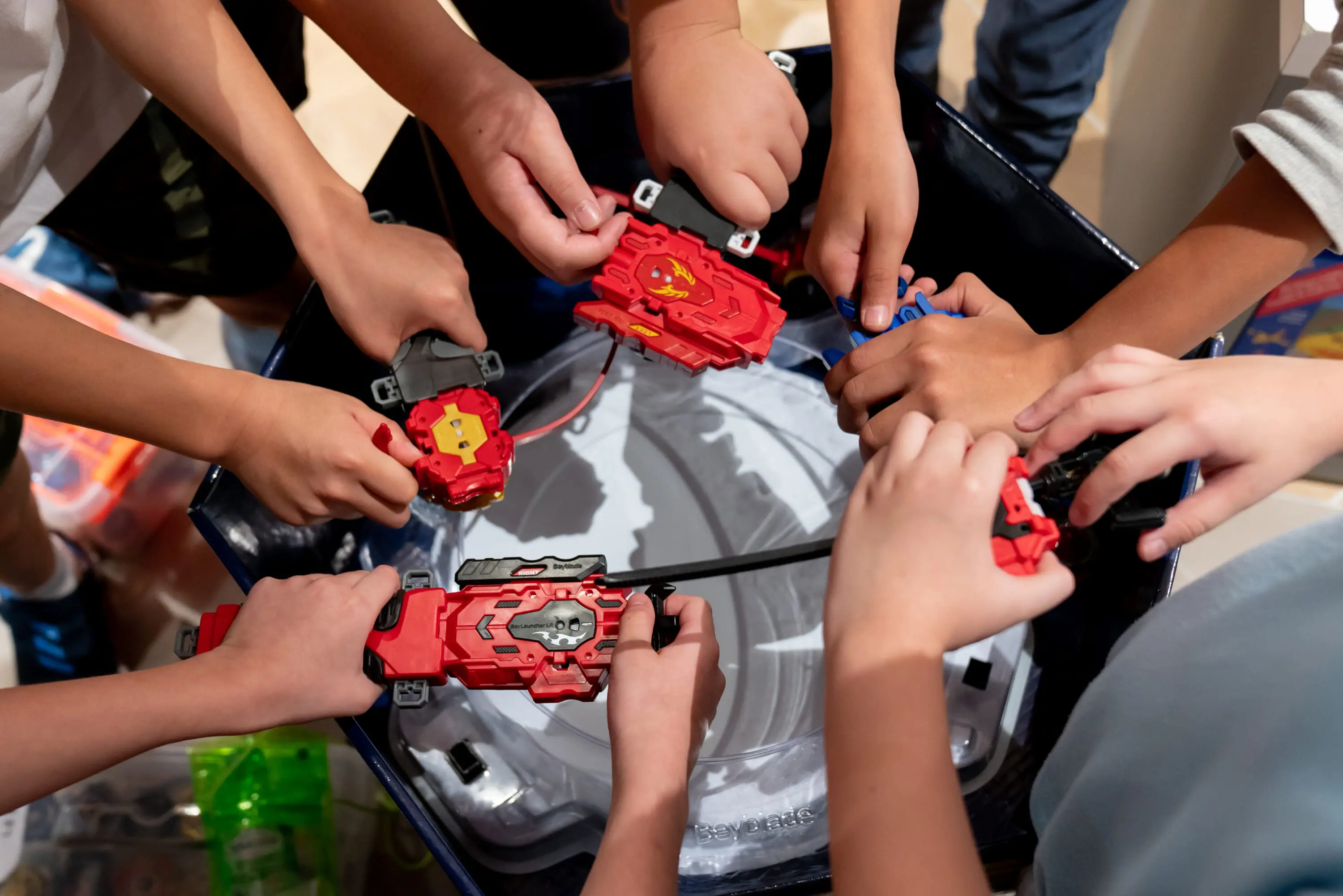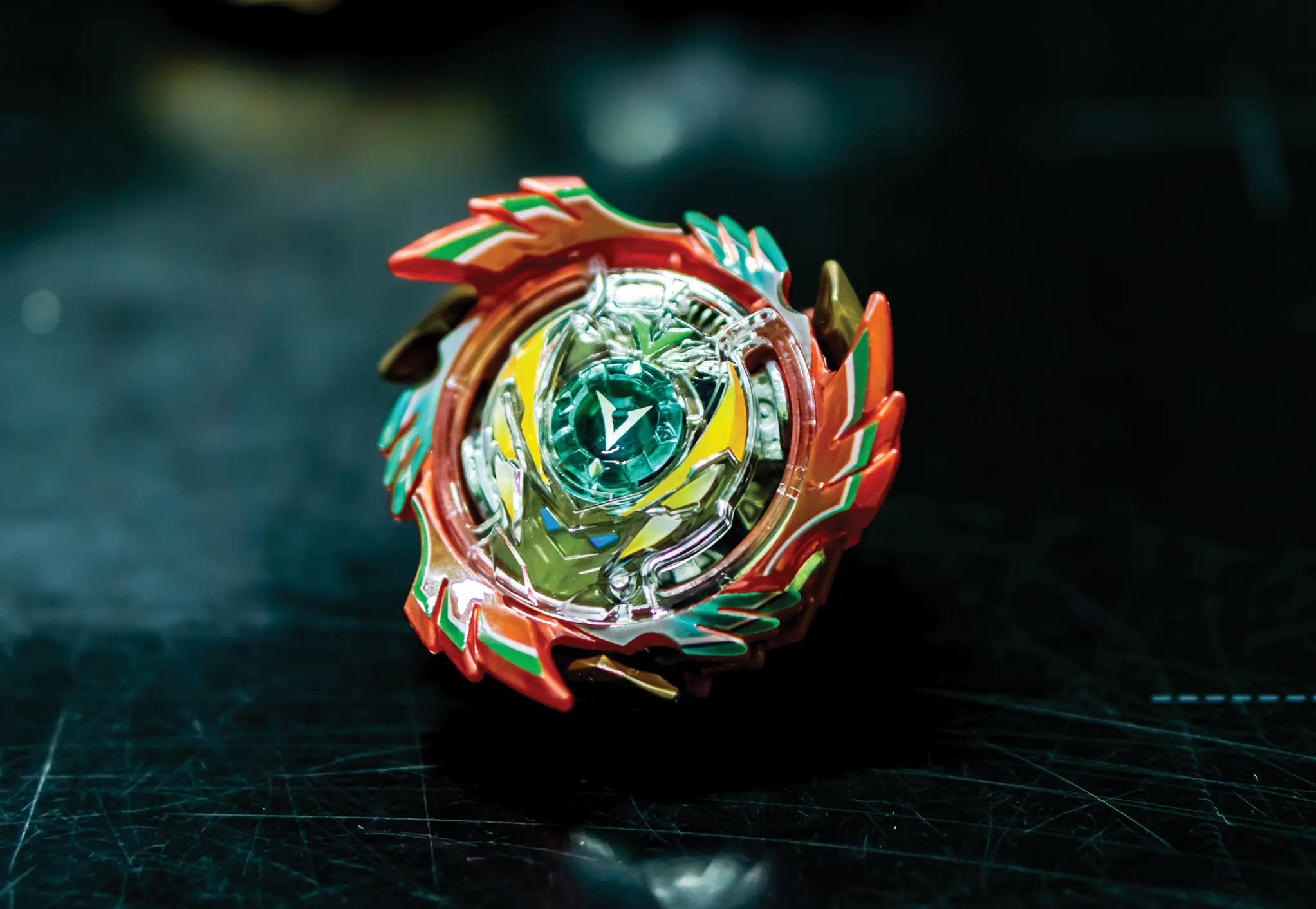Beyblade turns 25 this year. Yet when toy company Takara Tomy released Beyblade X in July 2023, the response to the fourth generation of the franchise was anything but outdated. Domestically, toy shipments exceeded 2 million units, which was a huge feat considering 100,000 units in today’s climate is already considered a success. As Japan’s birth rate continues to decline, how has Beyblade, a series primarily marketed at young children, maintained its cultural significance?

Appealing to the Next Generation
At the time of its release, Beyblade X was mainly purchased by existing users who had loved the previous Beyblades. However, combined with the Beyblade X anime broadcast which started in October 2023, the number of purchasers from new users, such as elementary school children, increased. Now, 80% of the buyers are children.
“I really started to feel it expand after the New Year. It was the best feeling I’ve ever had among the products I’ve been in charge of. I was very happy.” says Kyohei Shinonaga, a member of the marketing department at the Global Beyblade Business Division at Takara Tomy.
A key strategy for the adoption of Beyblade X was to increase opportunities for the public to try it once, such as holding trial sessions alongside regular sporting events for soccer, volleyball and rugby.
“We were convinced that once people tried it, they would understand how much fun it is. After all, the fun of the product is everything.” says Ryo Horikawa, also from the marketing department of the Global Beyblade Business Division at Takara Tomy.

A New and Improved Beyblade
The Beyblade X also comes with a new Extreme Dash function, a mechanism that allows Beyblades to accelerate quickly, making them more likely to collide with each other, resulting in some intense and exciting battles between the tops.
“In previous generations, there were sometimes battles where the Beyblades didn’t collide very much. After a few minutes, your own Beyblade would slow down, and you would just wait for the time to pass. We bolstered this feature because the most exciting part is the collision,” says Horikawa. “We also changed the duration of a single battle to end within a minute. This makes it easy to upload to social media, so we think we have made an adjustment that fits with the times.”
A History of Spinning Tops
Beyblade is now synonymous with the Takara Tomy brand, but this wasn’t the company’s first foray into spinning top games. Takara, the predecessor of Takara Tomy, had previously released spinning top toys such as “Suge Goma” in 1995 and “Battle Top” in 1997, but they both underperformed. As a result, the company was initially very hesitant to release Beyblade. Still, some employees who truly believed in the product decided to take the risk, adopting a “third time’s the charm” mentality.
“The tops are tied around strings but controlled by your own power. There is a thrill to seeing your top clash violently with your opponent. And the feeling when you emerge victorious is simply unmatched,” shares Shinonaga.
There is something exciting about spinning and crashing tops together at high speed that appeals to our primal instincts as humans. The team were also inspired by the popularity of trading card games at the time and thus incorporated a customization and collection element. Players could assemble their own tops by combining parts, similar to building a deck of cards.
This journey wasn’t without difficulties. Between the second and third generations, Horikawa and his team focused on developing a ploy to enhance the Beyblade comeback. They tried making the stadiums narrower while also increasing rotational power. Each prototype takes about a month to make, so the number of models that can be tested within a year is limited. According to Horikawa, only about 1% of prototypes ended up being included in the series.
The Yokai Watch boom, which happened during the third generation, also negatively impacted all other toy franchises. It wasn’t until Horikawa consulted a female colleague from a different department who gave him the idea of a Beyblade that could split into pieces upon collision for more impactful battles. They added a cover to the stadiums for safety and this became Beyblade Burst. Released in August 2015, it was another hit.

From Toys for Children to Toys for Parents and Children
It’s common for anime and its toys that have grown across generations to become communication tools for parents and their children to connect.
“It’s nice to be able to share something you’re passionate about with your kids. Also, from the second to third generation Beyblades, we saw an increase in the number of adult fans. I feel that this was due to social media,” opines Shinonaga.
A first generation Beyblade fan is probably somewhere between their late 20s and their early 30s. It’s an age group that has more disposable income. They are also active on social media. Beyblade videos are shared on YouTube, which also helps to capture the interest of the younger generation.
According to Shinonaga, innovation has been key to maintaining Beyblade’s relevancy. Products from a previous era are not compatible with the next, so each new Beyblade needs to be developed with the new generation in mind. While he’s nervous about the response to the fourth generation, he’s confident that users who have been loyal Beyblade fans will also find it interesting.
The Beyblade team, which includes people like Horikawa and Shinonaga, have been Beyblade enthusiasts since day one. It is through their genuine love for the product that they never found the challenges difficult, even if the development of the product can take a long time. Beyblade’s popularity now extends throughout the entire world. More than 520 million units have been shipped overseas as more and more competitions are developed in different countries and regions.
“Those who played Beyblade in the past have a strong perception that it is a toy that was popular back in the day. In order to change their thinking, we need to evolve it into a sport that can be enjoyed across all generations and cultures,” concludes Shinonaga.









